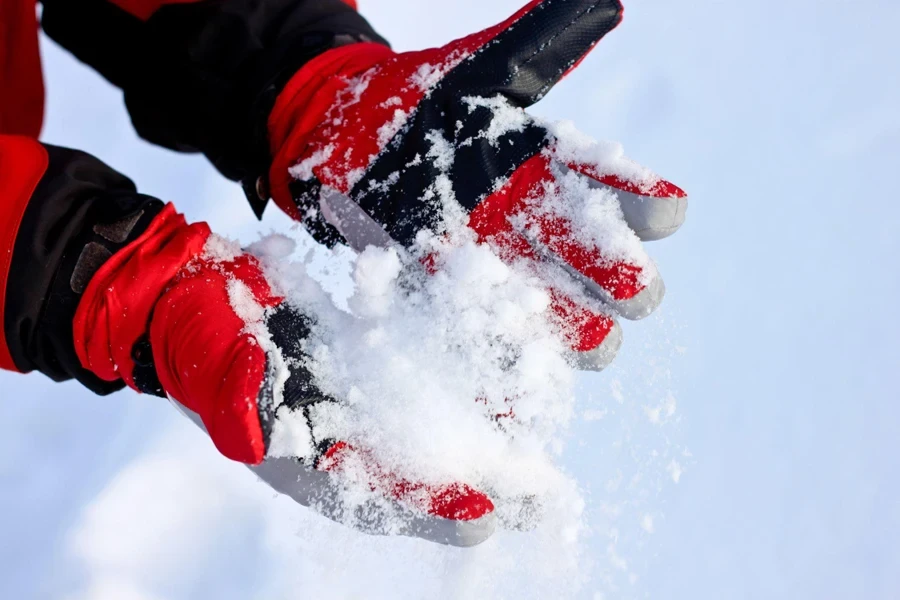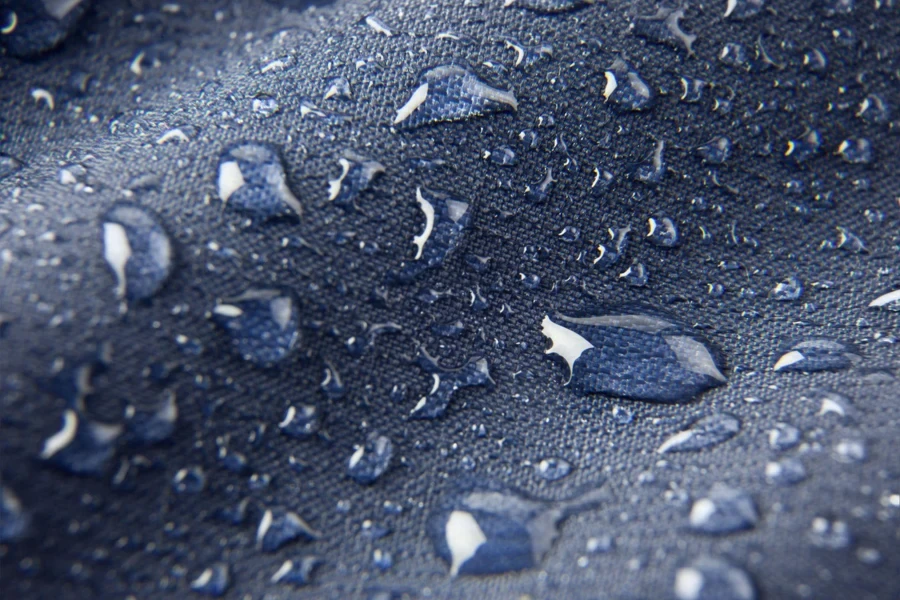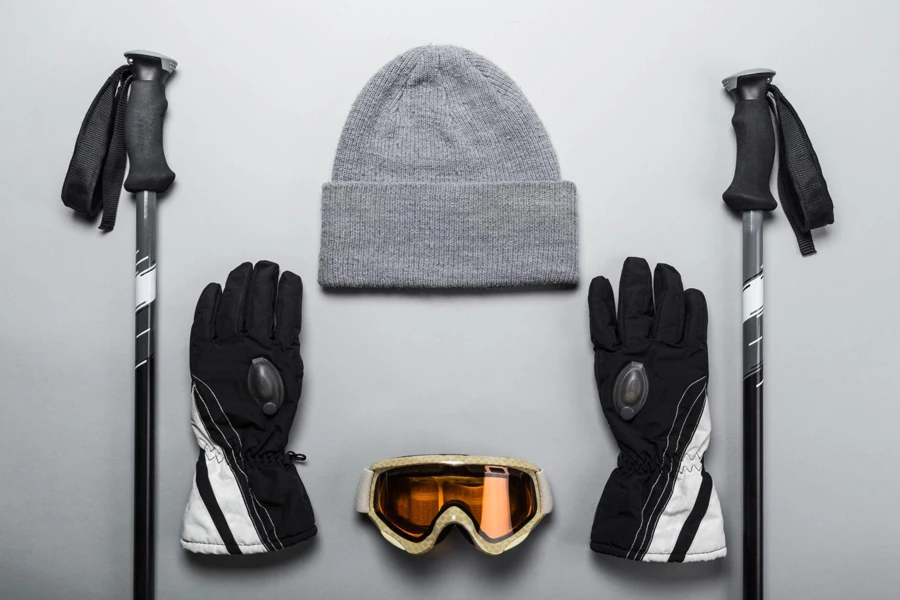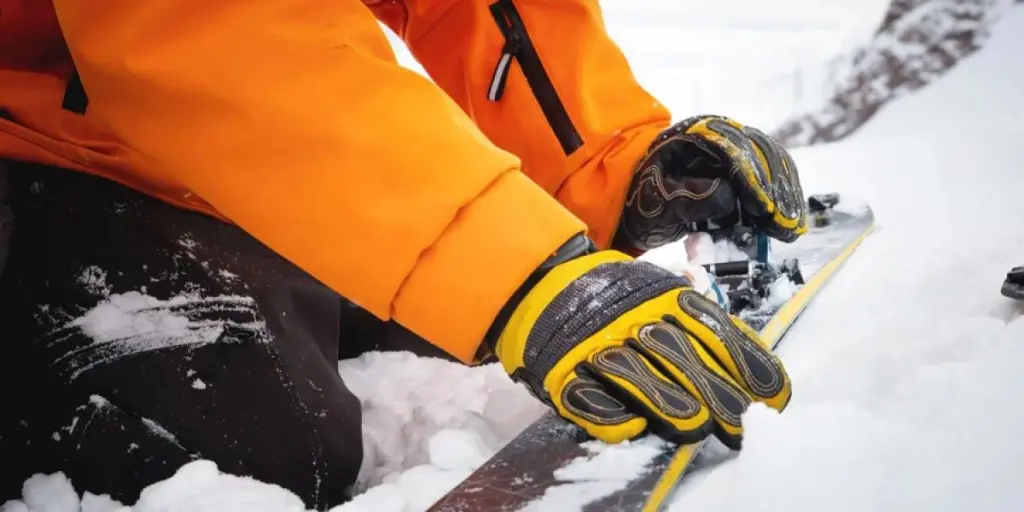Table of Contents:
● Introduction
● Market Overview
● Key Considerations
● Top Ski Gloves for 2024
● Conclusion
Introduction
In 2024, this guide stands as your definitive compass in navigating the intricate world of ski gloves. In an era when technology and user expectations continually evolve, the importance of choosing gloves that harmonize warmth, comfort, and performance has never been more paramount. The article illuminates the path through the latest market trends, vital considerations, and standout products for retailers. Welcome to a new pinnacle of informed decision-making, where the right pair of gloves protects.
Market Overview
The market size of global ski gear and equipment is $1.70 billion in 2023 and the projected growth (2024-2032) is a CAGR of 3.2% which is expected to reach $2.26 billion by 2032. Ski gloves obviously play a pivotal role in this market which is marked by a blend of technological innovation and changing consumer preferences. The market is expected to continue its upward trajectory, driven by innovations in materials, insulation, and design. A distinct preference for men’s gloves continues to dominate the market, yet offerings are expanding to include more diverse options for women and children.
Market leaders such as Hands On, Arc’teryx, Swiss+Tech, and others are continually strategizing to expand their product portfolio, ensuring their offerings resonate with current trends and consumer demands. Brands are leveraging advanced technologies to introduce gloves that not only provide superior protection against the cold but also enhance the overall skiing experience with features like touch compatibility, improved grip, and ergonomic design.

Key Considerations
When selecting ski gloves for the 2024 season, several critical factors must be taken into account to ensure optimal performance, comfort, and durability:
Materials:
The materials used in ski gloves, such as the outer shell, insulation, and waterproofing, are crucial in determining their performance. The right combination of these materials distinguishes a good pair of ski gloves from a bad one by ensuring durability, warmth, and dryness in various skiing conditions.
Outer Materials:
- Leather:
- Commonly used for its durability and grip.
- Types include cowhide, goatskin, and pigskin.
- Requires treatment for water resistance.
- Synthetic Fabrics:
- Includes nylon, polyester, and polyamide.
- Often used for the glove’s shell due to their lightweight and quick-drying properties.
- Some are specifically designed for abrasion resistance and durability.
Insulation Materials:
- Down Insulation:
- Lightweight Warmth: Offers excellent warmth-to-weight ratio, making it ideal for extremely cold conditions.
- Best When Dry: Loses insulating properties when wet, so it’s best used in dry, cold conditions.
- Less Breathable: Can be too warm and lacks breathability compared to synthetics, which might decrease dexterity.
- Wool:
- Natural Insulator: Provides decent warmth and is known for its moisture-wicking properties.
- Warm When Wet: Retains warmth even when damp and is more breathable than cotton.
- Heavier: Tends to be heavier and dries slower than synthetic materials.
- Synthetic Insulation:
- Thinsulate™, Thermolite®, Breathefil™: These are popular synthetic insulations known for their warmth, even with less bulk.
- Moisture Resistance: Maintains insulating properties even when wet and dries quickly.
- Versatile: Suitable for a wide range of conditions and provides a good balance of warmth and dexterity.
- PrimaLoft®:
- Balance of Warmth and Water Resistance: Offers excellent warmth and is water-resistant, making it a versatile choice for various conditions.
- Breathable and Compressible: Provides good breathability and can be compressed without losing warmth, making it ideal for active use.
- Lofty Synthetics:
- Warmth in Extreme Cold: Provides good all-around insulation for very cold conditions.
- Bulkier: Can be bulkier and may decrease dexterity compared to thinner synthetics.
- Water Resistant: Retains warmth when wet and is more breathable than down.
Considerations for Amount of Insulation:
- Warm Days and Spring Conditions: Less than 100 grams of insulation is suitable for warmer days or for those with naturally warm hands.
- Average Winter Days: Around 100 grams of insulation is ideal for typical winter temperatures ranging from 20-30 degrees Fahrenheit.
- Cold Days, Mid-Winter: 150-200 grams of insulation is recommended for colder days below 20 degrees Fahrenheit.
- Extremely Cold Conditions: More than 200 grams of insulation may be necessary for sub-zero expeditions or Arctic conditions. Avoid moisture barriers when it’s extremely cold and dry.

Waterproof & Breathable Membranes:
- Waterproof Membranes:
- Gore-Tex®: The most well-known waterproof and breathable membrane, used in many high-end ski gloves. It keeps external moisture out while allowing internal moisture (sweat) to escape.
- Other Membranes: Similar to Gore-Tex, there are other waterproof/breathable membranes like eVent, HyVent, and proprietary technologies from various brands.
- Durable Water Repellent (DWR) Coatings:
- Applied to the outer fabric of the gloves, DWR coatings help repel water and prevent the fabric from becoming saturated.
- Over time, DWR coatings can wear off but can be reapplied to maintain water resistance.
- Seam Sealing:
- Critical in preventing water ingress, especially at the seams where different materials meet. Properly sealed seams are a must for maintaining the waterproof integrity of the gloves.
- Leather Treatments:
- Leather parts of the gloves, often the palms and fingers, may be treated with waterproofing agents to enhance water resistance while maintaining grip and dexterity.
- Regular maintenance with conditioners and waterproofing agents is necessary to keep the leather water-resistant.
- Considerations for Breathability:
- While waterproofing is crucial, it’s equally important for gloves to be breathable to prevent internal condensation and keep hands dry from sweat.
- The balance between waterproofing and breathability affects comfort and the overall dryness of the hands.
- No Membrane Gloves:
- Some gloves are designed without a waterproof membrane to maximize breathability and dexterity. These gloves rely on water-resistant materials and treatments to keep hands dry.
- Suitable for less extreme conditions or for skiers who prioritize breathability and flexibility over waterproofing.
- Maintenance and Care:
- Regular care, including cleaning and reapplying DWR coatings or waterproofing treatments, is essential to maintain the waterproof and breathable qualities of the gloves.
- Proper storage and drying after use extend the life and performance of waterproof gloves.

Dexterity:
Pre-Curved Fingers & Articulated Design:
- Pre-Curved Fingers: Many gloves feature pre-curved fingers, which mimic the hand’s natural resting state. This design reduces hand fatigue and improves grip by aligning with the natural curve of your fingers.
- Articulated Design: Articulated gloves have panels or seams that allow for easier bending and movement of the fingers. This enhances the ability to perform tasks without removing the gloves, such as adjusting ski bindings or handling zippers.
Adjustable Features:
- Wrist Straps and Cuffs: Adjustable wrist straps and well-designed cuffs can improve the fit of the glove, ensuring it moves naturally with your hand and doesn’t bunch up or restrict movement. A good fit is essential for maintaining dexterity.
- Liner Gloves: Using a thin liner glove under a heavier glove or mitten can provide additional warmth while allowing you to remove the outer layer for tasks requiring more precision. Liner gloves themselves are often designed for maximum dexterity and can be used alone in milder conditions.
Touch Compatibility:
- Essential for Modern Skiers:
- With the prevalence of smartphones and GPS devices, having gloves compatible with touchscreen devices is increasingly important for skiers and snowboarders who want to stay connected or navigate without removing their gloves.
- Conductive Materials:
- Touchscreen-compatible gloves incorporate conductive materials like silver or copper threads into the fingertips. These materials allow the electrical current from the fingertips to pass through the gloves and interact with the touchscreen.
- Design Variations:
- Some gloves feature conductive pads on the fingertips, while others might have entire fingertips made from conductive fabric. The design varies by brand and model, but the goal is the same: to enable touch interaction without removing the gloves.

Top Ski Gloves for 2024
Outdoor Research Prevail Heated GORE-TEX Gloves (Best Heated Ski Gloves):
- Features: These gloves feature a polyester-nylon outer with a goat leather palm and GORE-TEX waterproof insert. They are filled with EnduraLoft polyester insulation and have three unique warmth settings. They come equipped with practical features like a nose wipe patch, wrist leash, and storage clip. They are a great value for those frequently in cold climates, though possibly excessive for occasional skiers.
- Benefits: They provide solid battery life, a performance fit and build, and are touchscreen compatible. The downside is they might feel a bit heavy due to the dual batteries, and they have a narrow fit for average to large hands.The Outdoor Research Prevail Heated GORE-TEX Gloves are highly praised for their exceptional warmth, provided by a rechargeable battery with three heat settings and ample synthetic insulation. They offer surprising dexterity for heated gloves, thanks to their narrower finger design. These gloves are also very water-resistant, featuring a Gore-Tex insert and a secure wrist gauntlet. Durability is a strong point, with reinforced leather in high-wear areas and double-stitched seams.
Hestra Army Leather Heli Ski 3-Finger (Best 3-Finger Ski Gloves):
- Features: These gloves combine a goat leather palm with synthetic insulation and a polyester removable liner in a gauntlet style. The Hestra Army Leather Heli Ski 3-Finger gloves boast a unique ‘lobster claw’ design with an isolated index finger for enhanced dexterity. They combine a supple leather palm with a durable nylon backing and feature a removable fleece glove liner. Priced at around $160, these gloves are designed for skiers and snowboarders seeking a blend of warmth and flexibility in colder climates.
- Benefits: They offer a nice balance of warmth and dexterity, with a comfortable and anatomical design. The sizing, however, tends to run large. These gloves offer great dexterity for a mitten-style design, making them less cumbersome than traditional mittens. They are ultra-warm and extremely durable, with a very cozy interior. However, they are not extremely water-resistant and require regular waterproofing treatments for the leather palm. Ideal for cold, dry climates, they may not be the best choice for wetter conditions due to the lack of a waterproof membrane.
Leki Xplore S & Xplore S Women’s (Best Ski Gloves With Ski Pole Attachment):
- Features: The Leki Xplore S and Xplore S Women’s gloves are crafted from 100% goatskin leather, offering a waterproof exterior with PrimaLoft insulation for warmth. They are distinguished by their double gauntlet design and the innovative TriggerS loop for easy attachment to LEKI ski poles.
- Benefits: These gloves stand out for their exceptional durability and the integrated system that connects seamlessly with LEKI ski poles, enhancing ease of use. The double gauntlet design, while effective, may pose a challenge in fitting under some ski jacket cuffs. Their construction ensures hands stay dry and warm, making them ideal for avid skiers who prioritize functionality and a secure pole grip.

Conclusion
The appropriate selection of gloves is a fundamental element for any skier, transcending mere accessory status. For business professionals and online retailers in the ski industry, understanding the variety and specificities of gloves available in the market is the core. The choice of gloves directly influences user satisfaction, performance levels, and overall skiing experience. It’s essential for industry professionals to be well-informed about the various options, as outlined in this guide, to make informed decisions that cater to diverse skiing styles, preferences, and environmental conditions. Equipped with this knowledge, retailers can confidently prepare for the 2024 winter season, ensuring you offer products that enable skiers to excel in their sport.




